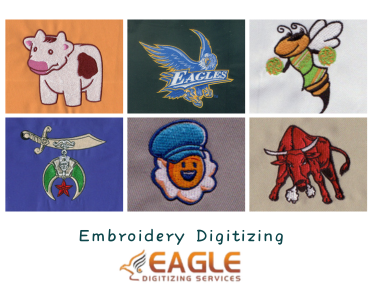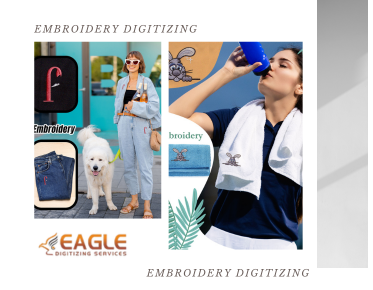Understanding the Relationship Between Embroidery Design and Graphics Design
Embroidery design is a specialized sector within the broader field of graphic design. Graphic design encompasses various forms of designing outputs that can be printable for paper, banners, and embroidery. When focusing specifically on embroidery design, it primarily relates to the apparel and textile industry. This form of design involves creating exclusive patterns intended for fabric products.
The Role of Graphic Design in Embroidery
Graphic design serves as the foundation for creating embroidery patterns. Fabric industries often begin by conceptualizing their desired designs using graphic design software. This initial step is crucial as it sets the stage for how the final product will look on the fabric. Once the design is crafted, the next step involves determining the precise placement on the fabric.
Embroidery Digitizing Process
The embroidery digitizing process is a critical step where the designed graphics are converted into a digital format that embroidery machines can read. This is where an embroidery digitizer expert comes into play. The digitizer inputs specific design commands and color sequences into embroidery design software. If there are any ambiguities or issues related to the design or colors, the digitizer will consult with the client to ensure accuracy.
Finalizing the Embroidery Design
After finalizing the details, the digitizer gives the master command to the embroidery machine. The machine then follows these programmed instructions to complete the embroidery design. This meticulous process ensures that the design is accurately reproduced on the fabric.
Importance of Professional Design
In today's market, various software tools make it easier to design items. However, achieving a professional-quality design is paramount. A well-crafted design not only enhances the aesthetic appeal but also adds significant value to the product in the market. Quality designs can quickly establish a brand, as customers consistently demand high-quality and well-designed products.
Eagle Digitizing: Commitment to Quality
At Eagle Digitizing, we prioritize creating new and innovative brands in the market. Our team of professional digitizers is dedicated to delivering perfect designs. Factors such as color combinations, design length, structure, and positioning are meticulously considered to create an impeccable design. Before finalizing a design, we provide clients with free embroidery design samples to choose from. If additional customization is needed, we offer bespoke design plans tailored to the client's needs.
The Value of Custom Design
Custom design services are a hallmark of our company. Unlike some industries that rely on generic, readymade designs, we focus on the unique needs of our clients. We understand that a well-designed product can significantly boost marketing value and business success. A quality design is instrumental in differentiating a product in a competitive market.
The Importance of Vector and EMB Formats
In the initial stages, designs should be created in vector format. This format allows designers to easily adjust the layout if necessary. For embroidery design, the EMB format is commonly used. It's important to note that embroidery designs can exist in two types of formats: source format and machine format. These formats ensure that designs are accurately translated from digital concepts to physical fabric.
Why Choose Eagle Digitizing?
Smart customers who value quality and precision will always choose Eagle Digitizing. Our commitment to creating top-tier designs ensures that our clients' fabric products stand out in the market. By choosing our services, clients benefit from our expertise and dedication to producing high-quality embroidery designs that add significant value to their products.
Conclusion
Embroidery design is a specialized field within graphic design that plays a crucial role in the apparel and textile industry. The process involves several meticulous steps, from initial design creation to final embroidery execution. Professional quality is essential to create designs that not only meet market demands but also enhance brand value. Eagle Digitizing stands out by offering customized design solutions that prioritize client satisfaction and product excellence.
FAQs
1. What is the difference between graphic design and embroidery design?
Graphic design is a broad field that includes various design outputs such as paper, banners, and embroidery. Embroidery design specifically refers to creating patterns for fabric products within the apparel and textile industry.
2. Why is professional design important in embroidery?
Professional design ensures high-quality output, which is crucial for establishing a brand and meeting market demands. A well-crafted design adds significant value to the product.
3. What role does an embroidery digitizer play?
An embroidery digitizer converts graphic designs into a digital format that embroidery machines can read. They input specific commands and ensure the design is accurately reproduced on the fabric.
4. What formats are used in embroidery design?
Embroidery designs are typically created in vector format initially and then converted to EMB format for machine readability. There are two types of formats: source format and machine format.
5. Why choose Eagle Digitizing for embroidery design?
Eagle Digitizing offers professional, customized design solutions that prioritize quality and client satisfaction. Our commitment to excellence ensures that our clients' products stand out in the market.



